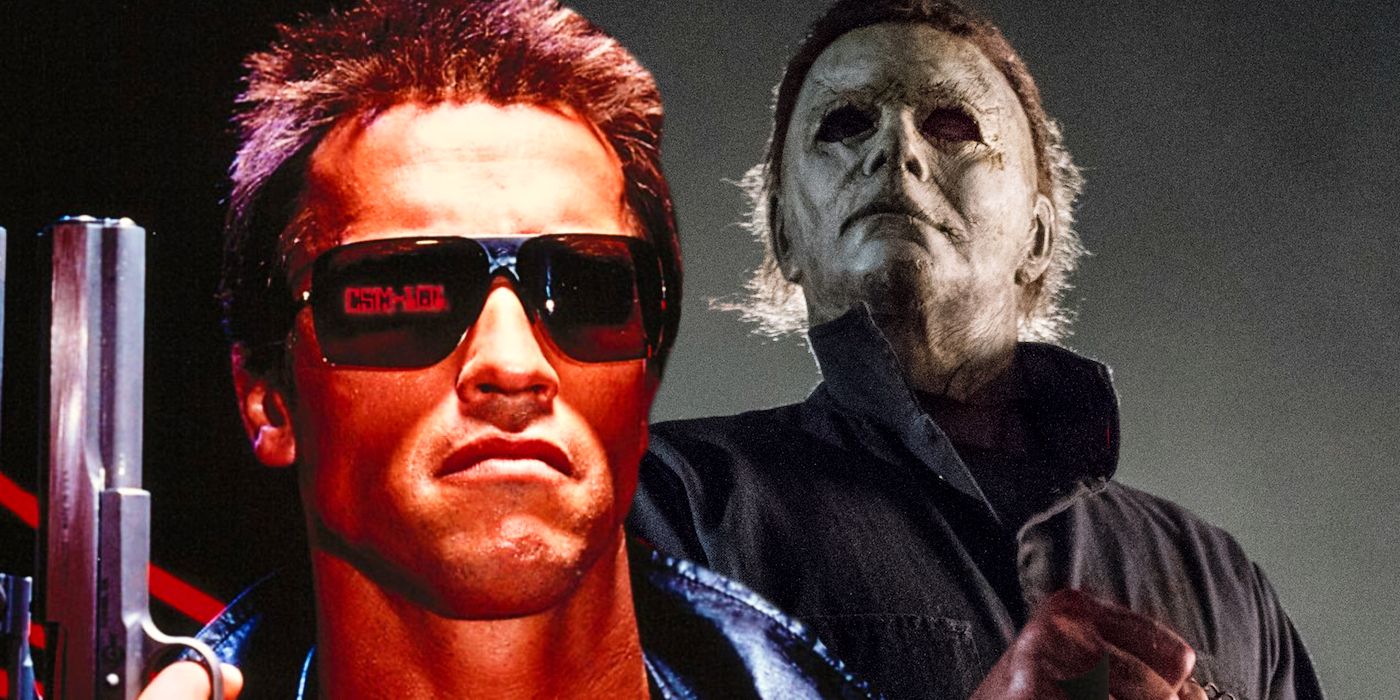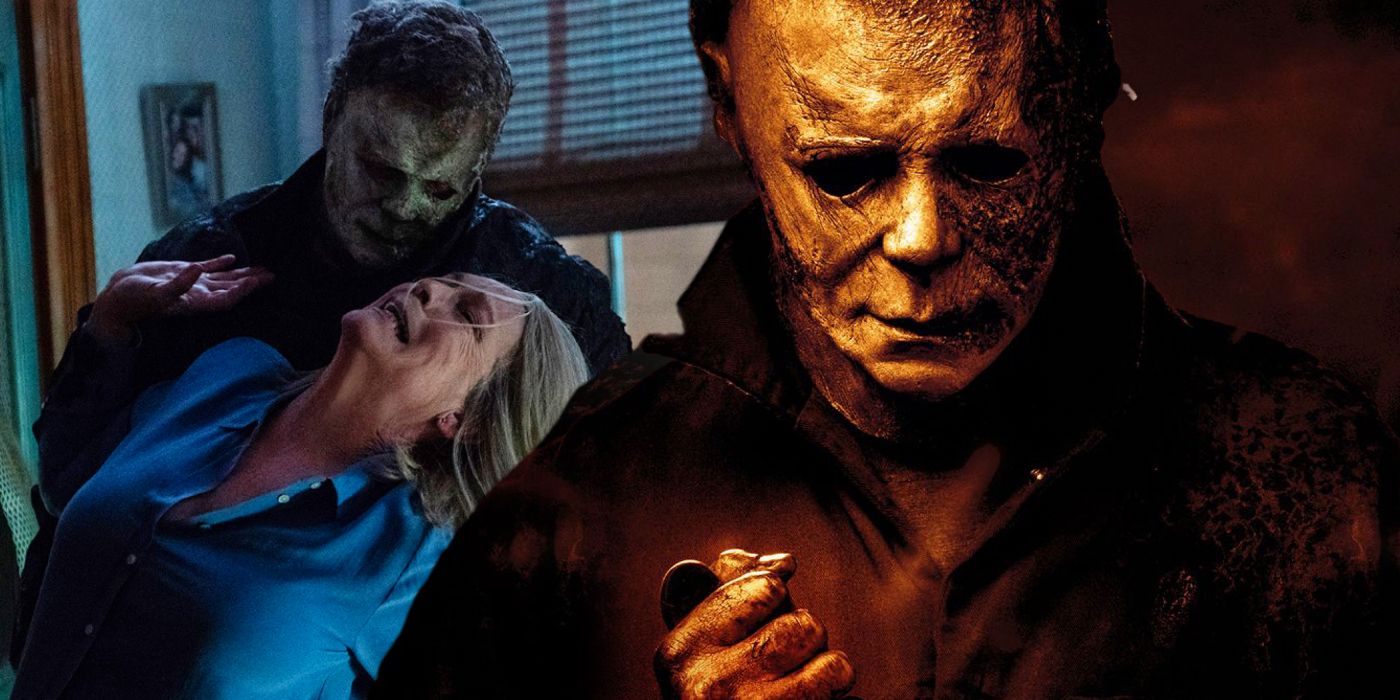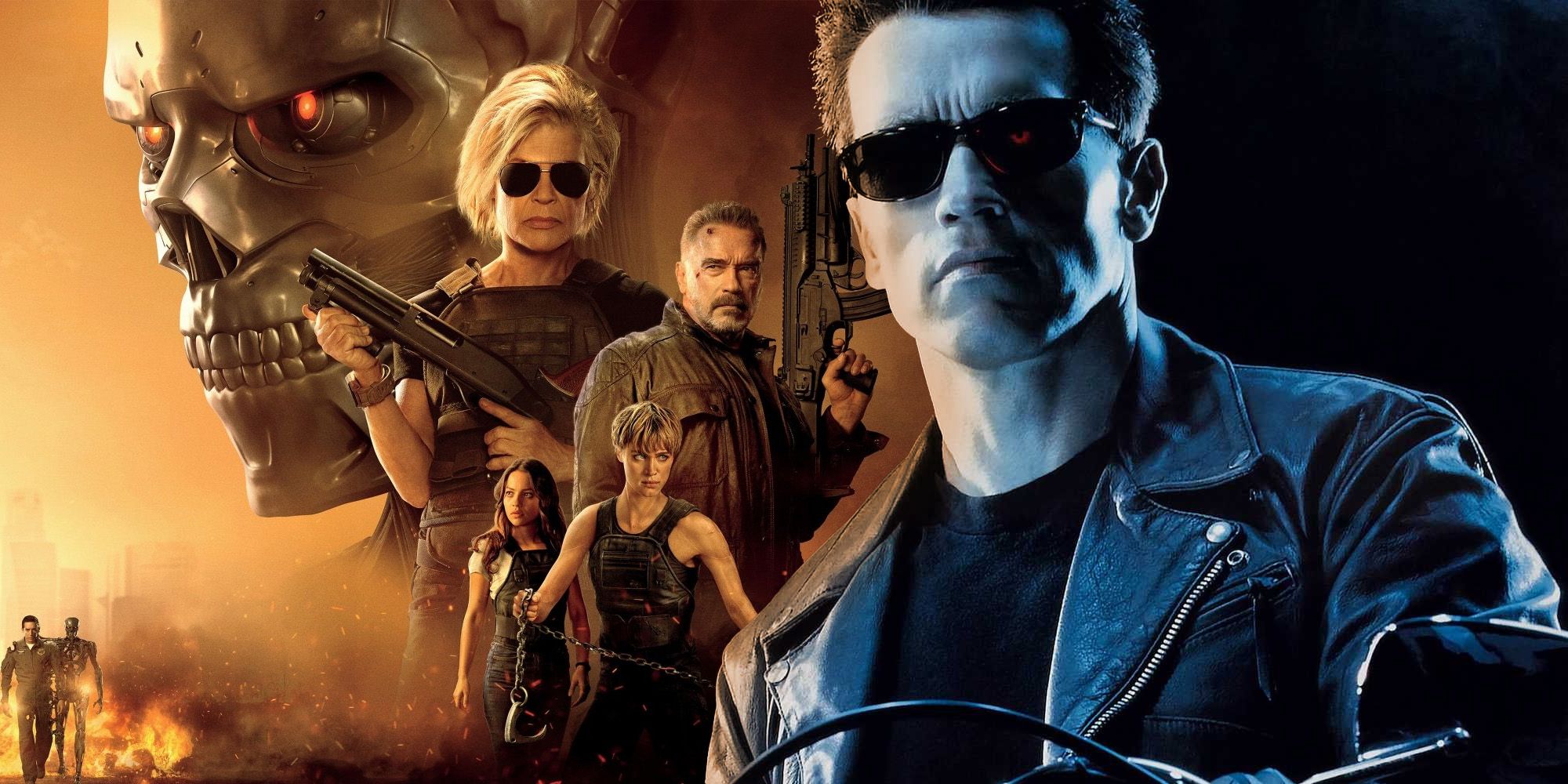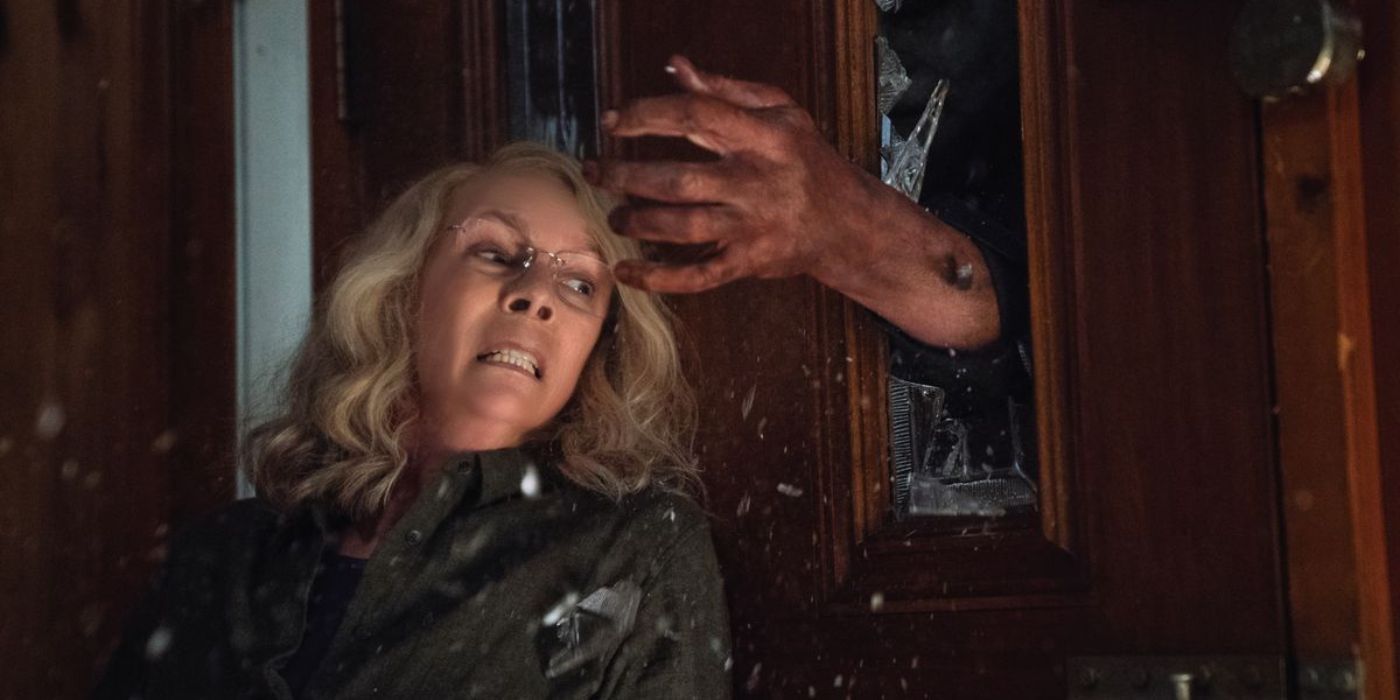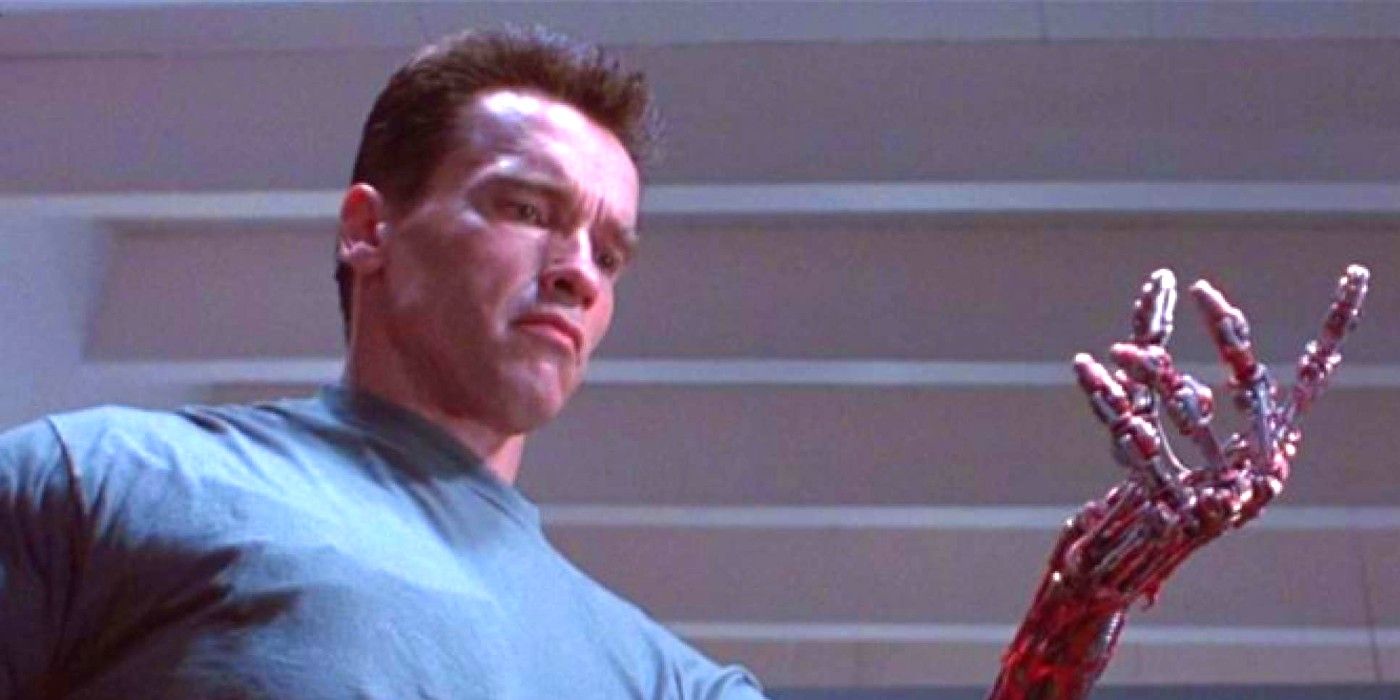While Halloween 2018 revived a horror franchise’s legendary Final Girl and the wordless villain that she faced down decades earlier, there is a reason that the reboot soared where numerous superficially similar Terminator franchise revivals have all failed. The Terminator series has been through a string of failed reinventions. From 2015’s Terminator: Genisys to 2019’s Terminator: Dark Fate to 2009’s post-apocalyptic war drama Terminator: Salvation, the Terminator movies have tried almost everything to make the franchise work again.
However, Terminator is not the only tired horror franchise that has survived a string of critically lambasted reboots. While Halloween Ends movie might struggle to win over audiences, Halloween 2018’s success with both viewers and reviewers proved that even a franchise that has brought its original heroine back numerous times before could still manage to successfully revive its original appeal decades later. As such, Terminator viewers might reasonably have wondered what the slasher series got right that the sci-fi horror franchise hasn't seemed to.
Like the Terminator franchise, Halloween 2018 took a classic horror franchise’s story of an iconic Final Girl and updated it, placing the original heroine in another grudge match with her old nemesis. Unlike Terminator’s many reboots, however, Halloween 2018 worked, succeeding at the box office while also attaining glowing reviews. Admittedly, its nostalgia-heavy sequel Halloween Kills did fare worse with reviewers, but Halloween 2018 at least received a sequel, which is more than any of the Terminator revivals have managed. However, while the franchises seem similar thanks to their beloved leading ladies and legendary villains, there are more differences between the Halloween and Terminator movies than meets the eye.
Halloween 2018 Kept Its Original Leading Lady
The Halloween franchise wouldn’t be the same without Jamie Lee Curtis's Laurie Strode, and the producers of the series knew it, meaning they never recast her. Terminator Genisys, on the other hand, invented a new Sarah Connor to give the part of a younger actor. This required the screenwriters to create a new timeline for the franchise, which ended up becoming one of the biggest mistakes Terminator: Genisys made. However, even without this absurdly complicated timeline, Terminator: Genisys’s decision to recast Sarah Connor never made sense in the first place. Fans of the original Terminator movies loved Linda Hamilton’s badass iteration of the character rather than Sarah Connor herself, as evidenced by the humdrum response to Lena Headey’s take on Sarah Connor in The Sarah Connor Chronicles years earlier. Thus, even before viewers got wind of the knotty new franchise chronology, this Terminator reboot was doomed from the instant that the movie dropped Linda Hamilton’s original heroine.
Halloween 2018’s Timeline Made Sense
The Halloween franchise may feature magic, cults, and an un-killable, seemingly supernatural villain, but its timeline is mercifully straightforward. In contrast, Terminator: Dark Fate killed John Connor in its opening scene, setting off the umpteenth new timeline of the series. Admittedly, Halloween 2018 did retcon every sequel after 1978’s original Halloween, so complaints about Terminator: Dark Fate rebooting the franchise timeline may seem contradictory. However, Halloween 2018 was pitched as a straightforward sequel to the original Halloween, ignoring every other franchise installment from the direct sequels to Halloween H20 to the Rob Zombie remakes. In contrast, Terminator: Dark Fate was a direct sequel to The Terminator and its first sequel, but disregarded its second sequel and also ignored the new timeline of Terminator: Salvation, although it did also set up a new separate timeline where John Connor still died (although this time his mother survived). While that seemed garbled and confiding when summarized, for viewers, it was even harder to follow.
The reason that few franchises could borrow Halloween 2018’s reboot formula was that the retcon option only worked if viewers were able to ignore everything after the original movie. Telling viewers to remember certain sequels but forget others was a more complicated ask, especially from a series that has always been at its best as a lean, mean, and, vitally, straightforward chase thriller. Halloween and The Terminator were both originally beloved for their simple, effective horror stories, but the interminably complicated storyline of the Terminator franchise couldn’t be saved by a reboot where the Halloween movies could simply start over anew.
Halloween 2018 Brought Back The Original Formula
Retconning all of its sequels, Halloween 2018 brought back the brutal simplicity of the original chase movie. Terminator’s reboots, in contrast, complicated things massively. Both Terminator: Dark Fate and Terminator: Genisys killed John Connor, but the two movies did so under drastically different circumstances. Both movies tried to reintroduce Sarah Connor to the series years after she was unceremoniously killed off before the events of Terminator 3: Rise of the Machines, but Terminator: Genysis recast her actor while Terminator: Dark Fate left her stranded in a needlessly complicated mess of intersecting timelines. Ultimately, what doomed the Terminator reboots was their failure to return to the slasher formula that made the original Terminator so popular, while Halloween 2018 succeeded because the reboot did exactly that.
How Terminator 2’s Success Doomed Its Reboots
Since Terminator 2: Judgment Day successfully reinvented Arnold Schwarzenegger’s villainous T-850 as the hero of the series, the Terminator movies have never been comfortable returning to the original movie’s story. Audiences loved Schwarzenegger’s T-850 as a villain, but they also soon came to view the character as a hero after Terminator 2: Judgment Day, and none of the subsequent reboots have been able to shake this perception. This is why Terminator: Genisys features a cuddly Terminator named Pops, while Terminator: Dark Fate featured a bizarrely guilt-wracked retired T-850 named Carl who became a suburban stepdad after completing his mission. Since the Halloween movies never had a successful sequel that turned Michael into a misunderstood good guy, there was nothing complicating Halloween 2018’s decision to retcon the sequels.
For many who love the Terminator franchise, Terminator 2: Judgment Day is considered to be the high point of the series. As such, bringing back the original Terminator’s slasher roots will likely never be a viable path for a reboot, since viewers can no longer see Schwarzenegger's characters as a villain. This means that a Halloween-style reboot can’t save the Terminator franchise, which explains why the slasher series was able to reinvent itself while the sci-fi horror movies have struggled to pull off the same feat for over a decade now.

